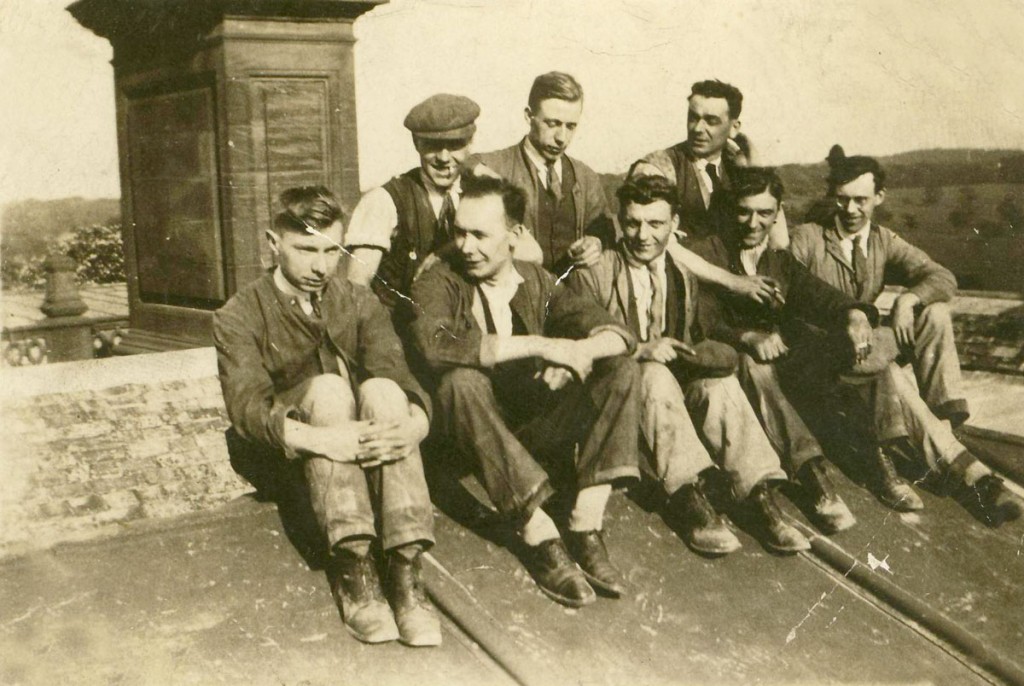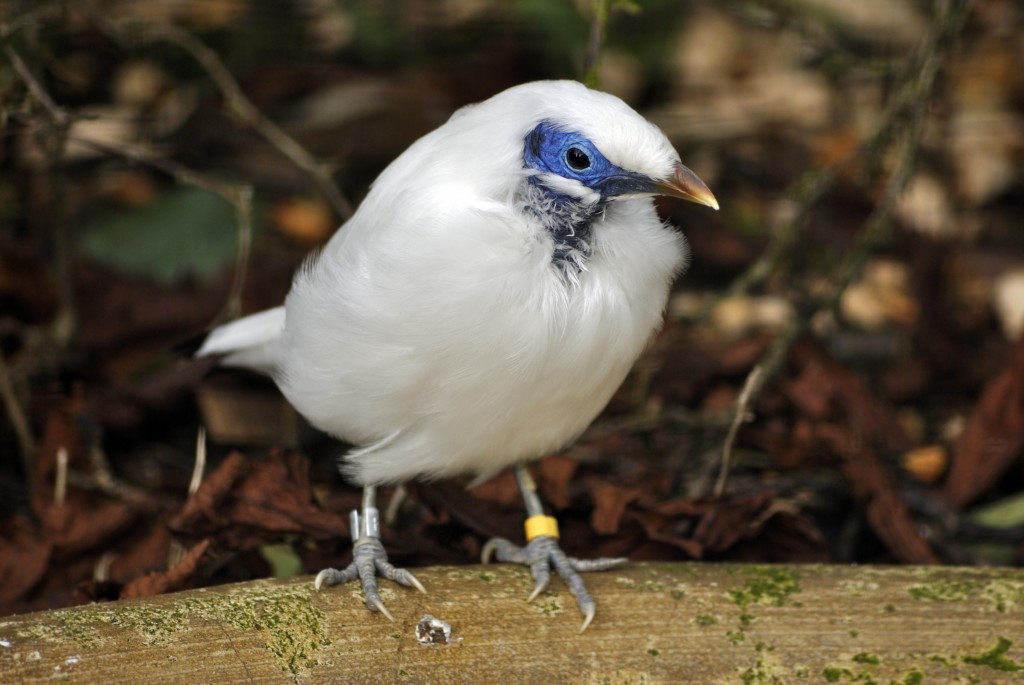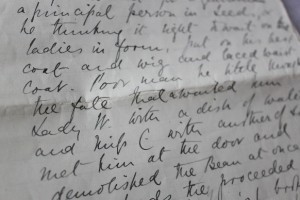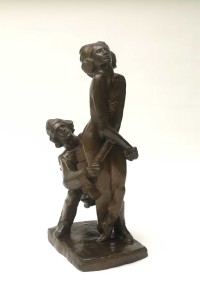
Men on roof of Harewood House. Centre front is Joe Pattison. Joe was from Newcastle and worked for a Newcastle firm on the electrics in the house in 1929. The workers lived in huts in the park whilst the work was done.
Records for over 1000 people who were once employed at Harewood House can now be researched online at servants.harewood.org. The site, which is free to use, is a resource for history enthusiasts, school groups, local people and anyone interested in knowing more about the staff who ran Harewood House. The digitised database, which stretches between 1749 and 1980, includes fascinating insights into the people who kept Harewood House operational.
Where information exists, records of past staff include dates of employment, lists of job roles held, salaries, images and any notes which may have been gathered. Visitors to the website can search through professions including Butlers, Housekeepers, Farm Workers and Lady’s Maids. More unusual roles which can be found include Oddman, Postillions and even a Rabbit Catcher.
“Harewood has many stories, many histories. This database gives access to the lives of the wide range of people who have lived and worked here – it’s fascinating stuff, chronicling the changing face of Harewood from generation to generation through personal memories and reminiscences.” Said David Lascelles, Earl of Harewood.
Research has been carried out within Harewood’s archives and from collated information submitted by members of the public.
“We’re thrilled to see the Servants’ Database online. It’s taken several years to pull the information together and we look forward to seeing it grow in the future. ” Said Anna Dewsnap, Head of Collections.
The database also enables users to share records via social media, submit updates and include their own information should they wish to.
To celebrate the launch of the Servants’ Database, Harewood is holding Summer Discovery Days throughout August Bank Holiday. The event, which runs between Saturday 29th August and Monday 31st August, explores the quirky histories behind Harewood House. Visitors will be able to speak to Harewood’s House Stewards about the Servants’ Database, meet Harewood’s first Housekeeper Elizabeth Burrows, and draw like Turner on the North Front.







